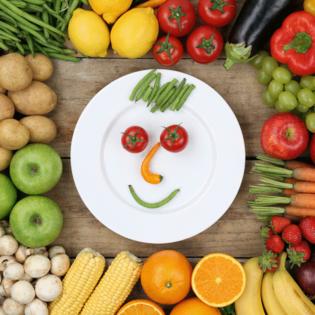Column: How can we get people to eat vegetables? Denmark has a way
Published in Variety Menu
One of the most traumatic moments in my life was being forced to eat a tangle of bean sprouts. These were not mung beans: They were thicker and twisted ominously out of their crunchy yellow seeds, looking like imploding tribbles from the classic Star Trek episode. They also gave off sulfuric fumes that made all the kids gag. But there was no escape.
“You can’t leave the table until you have this,” my uncle declared. It was 1979. My family had just immigrated to California and was staying with him and my aunt. That evening, he was in charge of feeding me, my siblings and his own kids because mom and her sister — the usual and very accomplished cooks — were away. If the smell was bad, it was worse going down. We ate these during the war, he said sternly. That made us feel worse: thinking about all the starving children in Japanese-occupied Asia who had nothing else on the menu.
I’d always been more of a carnivore, and those sprouts didn’t convince me to give up on chops and steaks. In the ensuing years, a generation of vegan and vegetarian activists didn’t sit well with me either. They were well-meaning with their catalogs of nutritious facts and save-the-planet statistics. But they often ended up strident, talking down to meat eaters as if we were pre-sapiens and then literally offering us pablum. “Would it kill you to have vegetables?” they’d say. I’d respond: “Maybe not, but that thing you put on my plate just might.”
So I was intrigued by a new initiative being introduced in Denmark to promote vegetables among a population that prefers meat and fish (and deep-fried camembert!). What’s fascinating, as my Bloomberg News colleague Sanne Wass says in her deliciously reported story, is that the literature being distributed by the Plant Fund avoids words like “vegetarian” and “vegan” — and it hasn’t set numerical or statistical targets. Instead, its $100 million in government funds are being directed at encouragement and nudging and the difficult art of convincing people that ingesting a few more greens actually enhances your gastronomic experience. No one is demanding that you give up meat — just to vary your diet. As Sanne says, “Getting people in high-income countries to eat less meat has been singled out as a key way to help the planet. Swapping out beef for a single meal can almost halve a person’s carbon footprint for that day.”
That uncoercive, flavor-forward approach to vegetables is completely preferable to the doctrinaire. The example of India comes to mind where religious groups are trying to force vegan menus on public school children, who are already among the least nourished in the world. An egg is the most efficient way to get protein into growing kids, but that’s forbidden in many parts of the country. Ironically, India also has the largest population of cattle in the world because the animal is considered sacred and allowed to wander freely everywhere. Cows produce a large part of livestock’s 14.5% share of global greenhouse gas emissions.
In Denmark, the Plant Fund is using food festivals and chef training to help increase the presence of vegetables on the national dinner table. Some of the most prominent and critically acclaimed Danish restaurants have been at the forefront of this, notably Rene Redzepi’s Noma (which holds an annual vegetable season that I will savor once more in a couple of weeks); and Geranium, which Sanne cites in her piece. But perhaps the key restaurant in the slow pivot to eating vegetables is Blue Hill at Stone Barns in New York. I used to hate carrots until chef Dan Barber served me a single, tiny carrot from his upstate farm. It was like candy — a sweetness all its own and unlike any other carrot I’ve had. That was about 20 years ago. I still approach carrots with some trepidation but no longer with outright loathing — and I am always overjoyed when Barber sends them out to me. Blue Hill raises (and serves) its own animals too. But the vegetables are outrageously good.
London has its cutting-edge vegetarian restaurants as well. I had the opportunity to sample the fare at Plates, a new spot by Kirk Haworth, who was crowned “champion of champions” in the latest iteration of the BBC’s Great British Menu. The menu isn’t vegan but almost completely plant-based (with a house ricotta the closest reference to animal protein). Even the butter that comes with an astonishing laminated bread is concocted from spirulina algae. It is green but absolutely winning. The restaurant has just opened, but it’s already booked up for months.
I’m not giving up meat, but my vegetable love should grow vaster, to steal a line from Andrew Marvell. As chefs turn their talents toward plants, more of my meals will be vegetarian — without feeling I’ve sacrificed enjoyment. I can have my steak, and eat it too. Just less often.
____
This column does not necessarily reflect the opinion of the editorial board or Bloomberg LP and its owners.
Howard Chua-Eoan is a columnist for Bloomberg Opinion covering culture and business. He previously served as Bloomberg Opinion's international editor and is a former news director at Time magazine.
©2024 Bloomberg L.P. Visit bloomberg.com/opinion. Distributed by Tribune Content Agency, LLC.







Comments